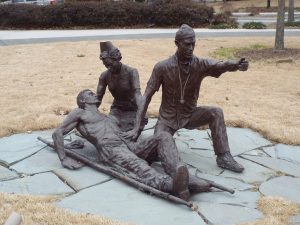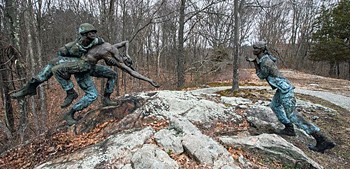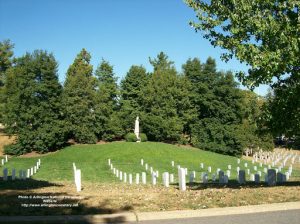
Slightly belated kudos to nurses in history and to the nurses during the current unfolding history. They once again are on the front lines and now on the homefront in ways they never imagined and with no end in sight. Below is a guest blog about nurses.
Nurses deserve a statue in Central Park
George Robinson Ph.D.
Nurses have received recognition for their front-line bravery and sacrifice in the Revolutionary War, the Civil War, World War I, World War II, and the Vietnam War. Since we are now involved in a War against COVID -19, make that a World War against COVID-19, our nurses deserve a statue in Central Park.
Central Park displays thirteen monuments, statues and plaques honoring war time contributions by American and global patriots. The last war recognized here was WWI. Time to update and salute the new war time heroes -our nurses!
There is precedent for honoring nurses during a wartime conflict.
The Civil War
Clara Barton, the “Angel of the Battlefield,” though she had no medical training, saw to it that medical supplies reached the doctors’ tents on the battlefields. She didn’t just issue orders from the rear; rather she was at every major battle in Maryland, Virginia, and South Carolina. While on the battlefields, she tended the wounded. Even when the war was over, Barton helped locate MIA soldiers and mark thousands of graves for those who wanted to know where their sons were buried. You can visit her statue at Antietam National Battlefield in Maryland.
WWI
Being a nurse was a dangerous assignment during wartime. In addition to avoiding debilitating diseases and dodging bullets and artillery shells, a nurse had to tread carefully when on captured soil. Edith Louisa Cavell, a British nurse, saved the lives of soldiers from both the Allied and Central Powers. She also aided in the escape of some 200 Allied soldiers from German-occupied Belgium during WWI. The Germans arrested her, and a court-martial found her guilty of treason. Despite world-wide pleas for mercy, she was shot by a German firing squad. The British erected a statue to her in Trafalgar Square.
Nurses did not avoid serving in hostile areas; that was where the casualties were.
WWII
On a remote island in the Pacific Ocean, made infamous for a death march, Bataan’s weather-beaten plaque proclaims the contribution of WWII nurses:
To the Angels
In honor of the valiant military women who gave so much of themselves
on the early days of World War II. They provided care and comfort to
the gallant defenders of Bataan and Corregidor. They lived on a starvation
diet, shared the bombing, strafing, sniping, sickness and disease while
working endless hours of heartbreaking duty. These nurses always had
a smile, a tender touch and a kind word for their patients. They truly earned
the name…
The Angels of Bataan and Corregidor
Dedicated on the 9th day of April 1980.
Back in the United States, a poignant statue at Duke University highlights the care that nurses dispensed during World War II.

In February 1944, doctors and nurses of the Duke School of medicine were ordered to Botesdale, Suffolk in England. In the aftermath of the D-Day Invasion, continental field hospitals evacuated their wounded to the 65th General Hospital. There the Duke nurses and doctors served 17,250 bed patients during 22 months of operation.
Vietnam

Take a walk down Broadway by the famous Bull. Instead of looking up at the buildings that line the Canyon of Heroes, look down where you will see the names in bronze of those who have received a ticker tape parade.
One of those names etched into the sidewalk honors a French Nurse, Genevieve de Galard-Terraube who would not leave her patients even after the Vietnamese had captured the French base at Dienbienphu in 1954.
There is another Vietnam era nurse who was not as fortunate as the French nurse to ride in a convertible down Broadway. Sharon Lane never left Chu Lai. The Aultman School of Nursing in Canton, Ohio has a statue dedicated to her service in Vietnam recognizing that this U.S. Army nurse was the only American servicewoman killed by direct enemy fire during the Vietnam War.
If you can’t make it to Canton, Ohio, go to Arlington National Cemetery. There, in addition to seeing the Changing of the Guard at the Tomb of the Unknown soldier, you can visit a peaceful spot on a hill. Take a moment to say a prayer at the statue dedicated by the Armed Forces to the Spirit of Nursing. This statue honors all the nurses who served in the Army, Navy, Marines, and Air Force.

Now venture over to the Vietnam Veterans Memorial. After reflecting on the terrible loss of life chiseled on The Wall, turn around and look across the field to a wounded soldier waiting for a rescue helicopter. The expression on the nurse’s face should remind us how much nurses tried to save lives.

All the statues for our nurses have some connection to war. It is time that we recognize the contributions of these present-day Nightingales who toil during peace time, as well as, during this World War on Covid-19, serving the injured, the diseased, and the dying.
Why Central Park? Because New York City is now the epicenter of Covid-19, experiencing more infections and death than even Wuhan, China. In and around Central Park brick and mortar, as well, as tent hospitals with their attending nurses have cared for casualties during the Civil War, during World War I with the disease that followed soldiers home, and now during the Covid-19 War. Central Park hosts nearly 35 million visitors a year. When travel resumes, those visitors should be able to stand in front of a statue that depicts a nurse in full battle gear – N95 mask, face shield, gloves, and gown with apron. And there give a nod to their story of service and sacrifice.
Author: Dr. George Robinson an educator, school administrator, a college adjunct professor of writing, as well as, a photographer. He has taken photographic exclusions to historic National sites such as: the Vietnam Veterans Memorial, 9/11 Ground Zero, and Revolutionary and Civil War battle sites. Dr. Robinson especially loves to photograph historic road markers, local statues and memorials to bring to life their forgotten stories.





